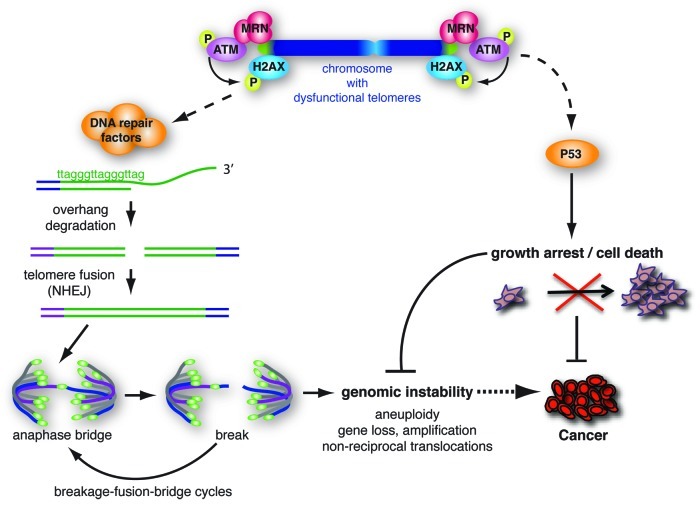Figure 1. The consequences of loss of chromosome end protection by telomeres. Depicted are the main consequences of loss of TRF2 shelterin activity, namely activation of the ATM-kinase pathway, which leads to p53-dependent senescence or cell death, to degradation of the telomeric single-strand G-overhang and to NHEJ-dependent formation of telomere fusions. Through the generation of unstable dicentric chromosomes these fusions can initiate breakage-fusion-bridge cycles and genomic instability in cells that escape cell cycle arrest or apoptosis. The induction of growth arrest or apoptosis by dysfunctional telomeres is regarded as an important tumor suppressor pathway by restricting the outgrowth of potentially cancerous cells. On the contrary, the repair activities acting at dysfunctional telomeres and consequential genomic instability can facilitate the development of cancer if cells with fused telomeres are allowed to continue through the cell cycle (e.g., due to loss of p53-activity). Not depicted here is activation of the p16Ink4a/Rb pathway, which in human (but not mouse) cells contributes to telomere damage-induced senescence.7,8

An official website of the United States government
Here's how you know
Official websites use .gov
A
.gov website belongs to an official
government organization in the United States.
Secure .gov websites use HTTPS
A lock (
) or https:// means you've safely
connected to the .gov website. Share sensitive
information only on official, secure websites.
